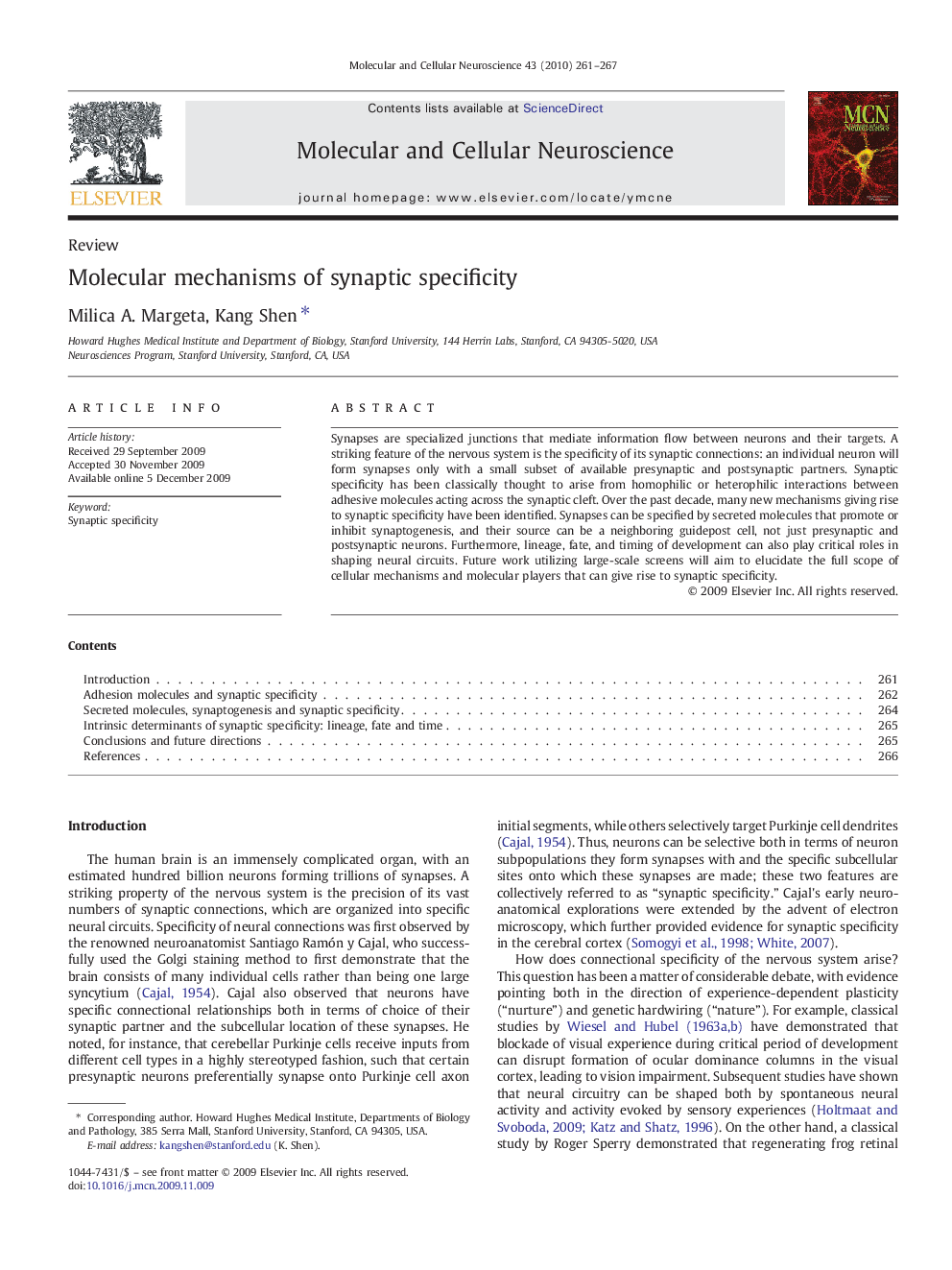| Article ID | Journal | Published Year | Pages | File Type |
|---|---|---|---|---|
| 2198835 | Molecular and Cellular Neuroscience | 2010 | 7 Pages |
Synapses are specialized junctions that mediate information flow between neurons and their targets. A striking feature of the nervous system is the specificity of its synaptic connections: an individual neuron will form synapses only with a small subset of available presynaptic and postsynaptic partners. Synaptic specificity has been classically thought to arise from homophilic or heterophilic interactions between adhesive molecules acting across the synaptic cleft. Over the past decade, many new mechanisms giving rise to synaptic specificity have been identified. Synapses can be specified by secreted molecules that promote or inhibit synaptogenesis, and their source can be a neighboring guidepost cell, not just presynaptic and postsynaptic neurons. Furthermore, lineage, fate, and timing of development can also play critical roles in shaping neural circuits. Future work utilizing large-scale screens will aim to elucidate the full scope of cellular mechanisms and molecular players that can give rise to synaptic specificity.
